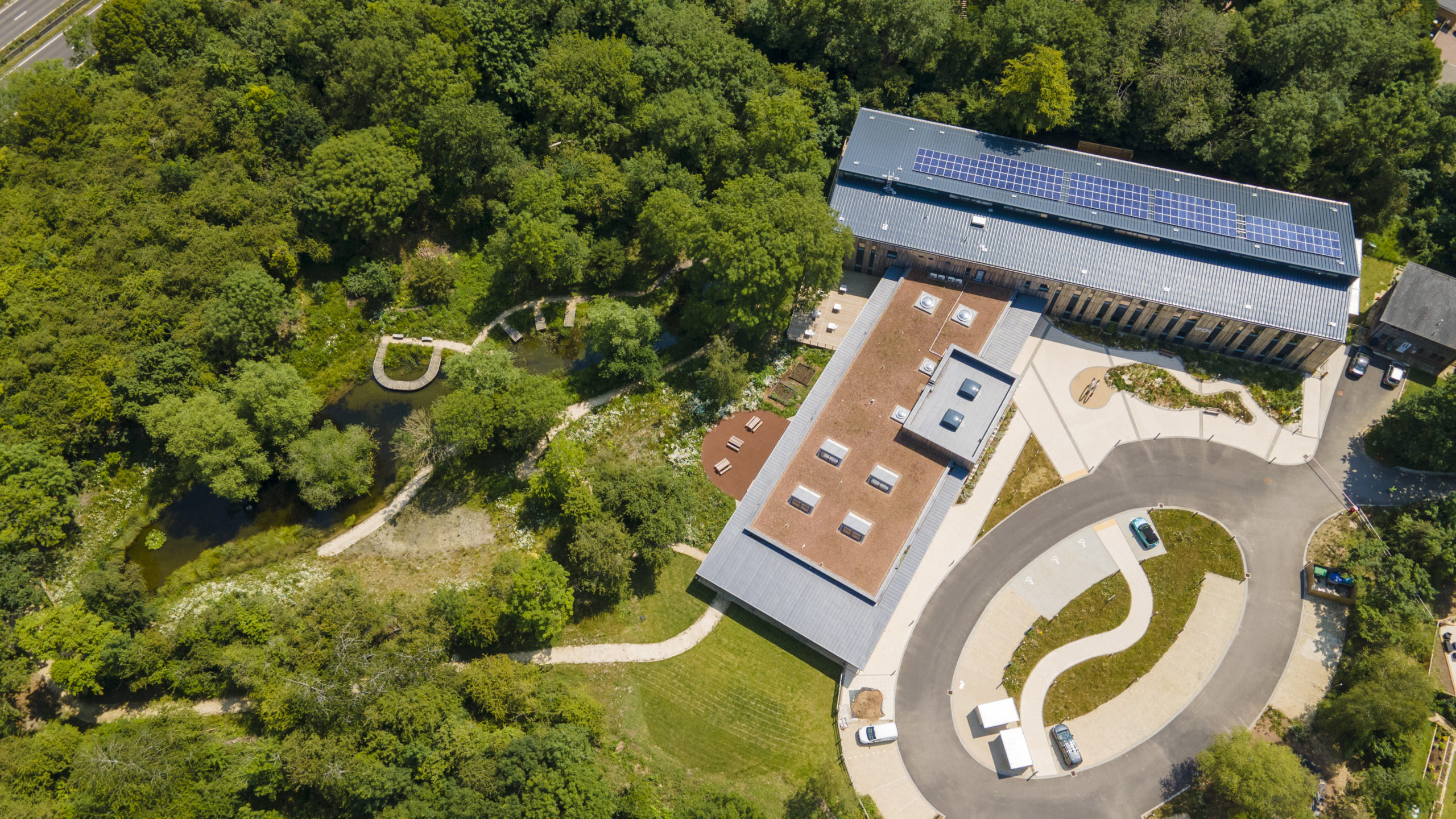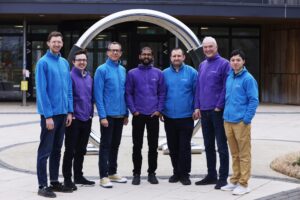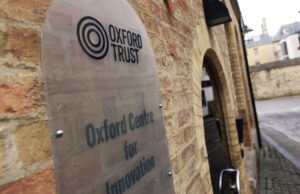The Wood Centre for Innovation: Our green credentials
September 28, 2022

Did you know that our Wood Centre for Innovation and adjoining Science Oxford Centre in Headington have great sustainability credentials?
Our founders, Lady Audrey Wood and the late Sir Martin Wood, are and were passionate about the countryside and environmental sustainability. They set up Wild Oxfordshire, the Sylva Foundation and the Earth Trust – one of the first environmental charities in Oxfordshire. The Oxford Trust is conscious of its environmental responsibility as an organisation and wants to be part of a cleaner, greener future. We hope that our centres are a good example of our green credentials. You can see in the photo above our solar array and amazing woodland setting.
Our new building
Both the Wood Centre for Innovation (WCFI) and the Science Oxford Centre in Headington have been designed and developed with sustainability in mind. To maximise beneficial solar gain in the two-storey innovation centre, a number of the office windows are south-facing. On the flip side, there’s an overhanging roof section to provide solar shading and prevent overheating.
The sun has also influenced design in the Science Oxford Centre. The workshop space on the eastern elevation has large windows to utilise natural daylight and emphasise the connection with the ponds and the woodland. In addition, a canopy around the centre provides solar shading during the summer months.
Wherever possible, building materials have been sourced locally to avoid the environmental impacts of transportation. The thermal insulation is from recycled or natural materials. Much of the building is wood-clad and all the timber and wood-derived products were specifically sourced in accordance with advice from the Forest Stewardship Council. In fact, the building is one of the biggest in the UK clad in thermally-modified timber – and it looks stunning as the wood gently fades naturally in the sun. We have used British Brimstone™ poplar for the cladding, which was developed by specialist supplier Vastern Timber, based in nearby Royal Wootton Bassett – all their timber was sourced within 100 miles of our site. Brimstone™ timber is designed to last for 60 years which is the same time as it takes a new tree to reach full maturity – a perfect circle.
The flat roof above the Science Oxford Centre theatre has been planted with a wildflower roof to promote biodiversity and act as an extra layer of insulation and the wall of the theatre is a living green wall, which has come into its own this summer.
Building management systems
We have installed a 49.775kWp array of photovoltaic panels on the south-facing roof of the innovation centre with a potential power output of approximately 43,551kWh per annum.
We have also put in air source heat pumps – they absorb heat from the outside air which is then used for the underfloor heating throughout the building. The whole centre is built to an exceptionally high air-tightness performance, ensuring maximum efficiency of this system. There are a large number of heating zones within the building so that we only heat the areas that we need to. With all of these things installed, our centres have an A-rated energy performance, which is also becoming ever more important as energy costs rise.
The site
The car park is made up of porous surfaces allowing rainfall to pass through into the groundwater aquifer. Surplus water drains into our pond network via a settlement lagoon that reduces the build-up of silt and allows hydraulic flushing while ensuring a reliable clean water supply.
Not only that, we are encouraging users of our centres to cycle, walk or use public transport to reach us. For those with electric vehicles, we have car parking spaces with electric car charging points installed.
We have also planted wildflowers all around the centre which adds wonderful vibrancy and colour to the site over the summer months and obviously encourages biodiversity too.
Our woodland
The Science Oxford Centre and WCFI are set in an established and diverse 15-acre woodland which, in addition to its carbon uptake, holds huge ecological value. It includes grassland, wildflower meadows, ponds and, of course, woodland. The area provides important habitat in itself but is even more important when considered as part of the urban greenspace that connects rural Oxfordshire with the River Thames corridor. While much of Oxford’s parkland is manicured lawns and tended flowerbeds, our woodland is managed for its ecology and the educational benefits it brings. We hope that it will educate children who visit our Science Oxford Centre about the world around them and create future stewards of our precious planet.
Are our centres carbon positive?
We’ve had some fun with figures to try and work out whether we think the site is carbon positive. Based on IMS data, we reckon our woodland will sequestrate – that’s “absorb” to you and me – 98 tonnes of CO2 per year. With our building in Headington now fully operational post Covid, and with the laboratories using air handling, we will be monitoring the impact of increased direct and indirect CO2 emissions but we anticipate that we will still be carbon positive. Sure to say that by protecting and enhancing the woodland surrounding the centre puts us in a good position to offset any negative impact from our operations on site.



